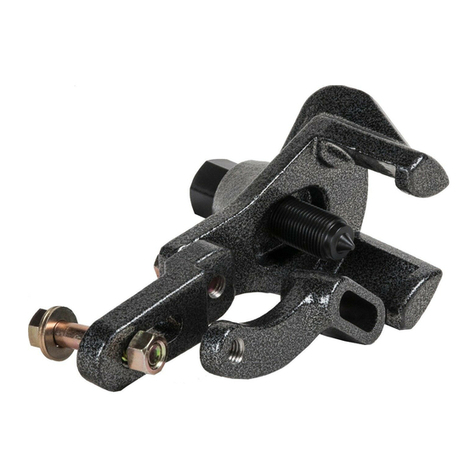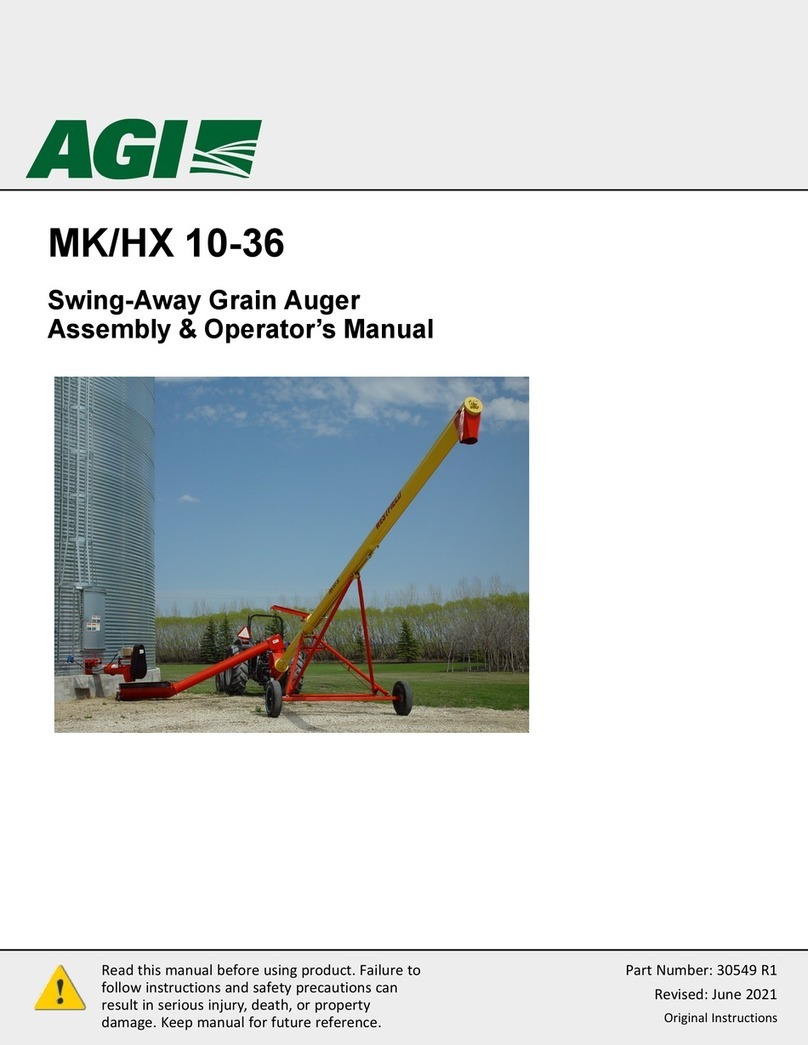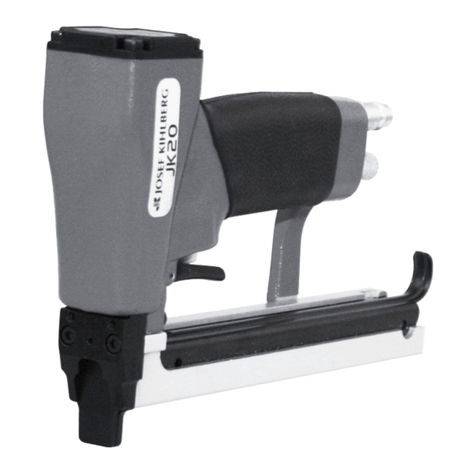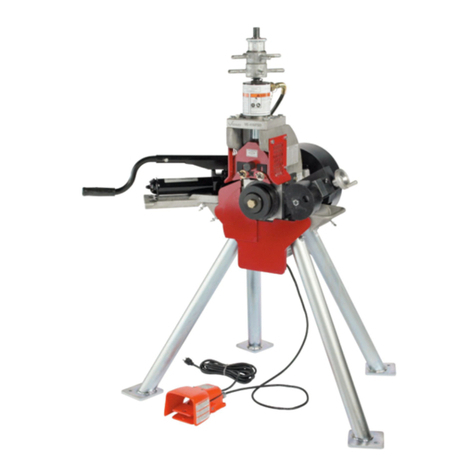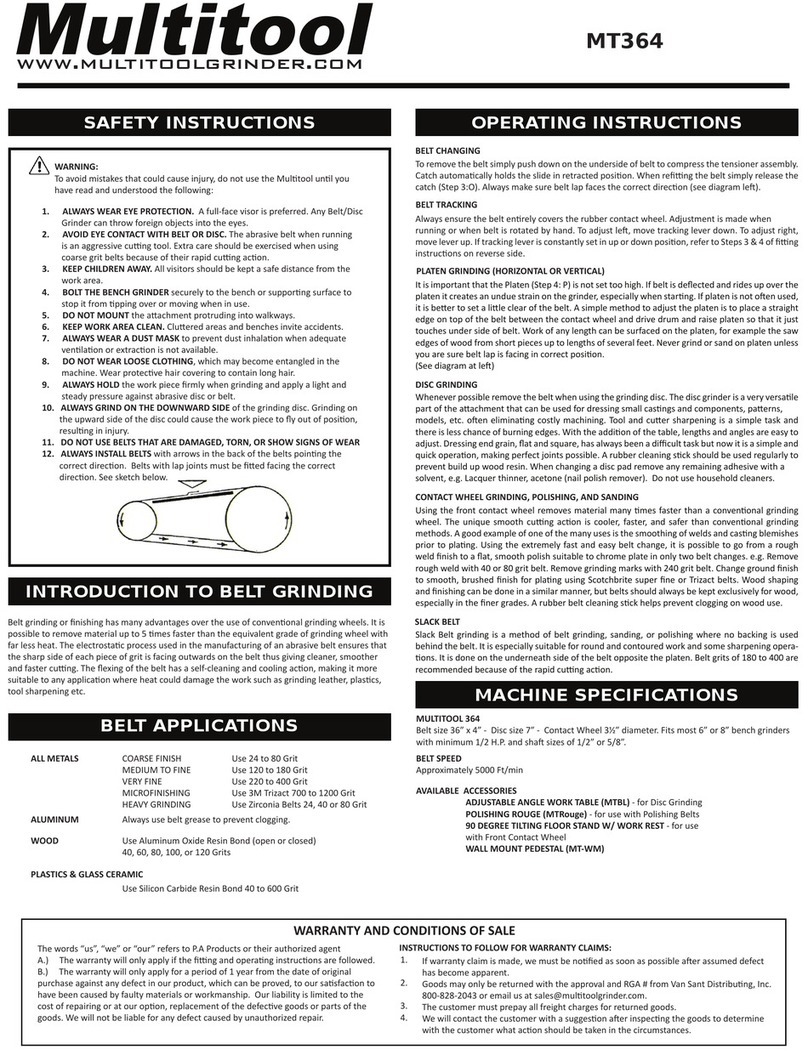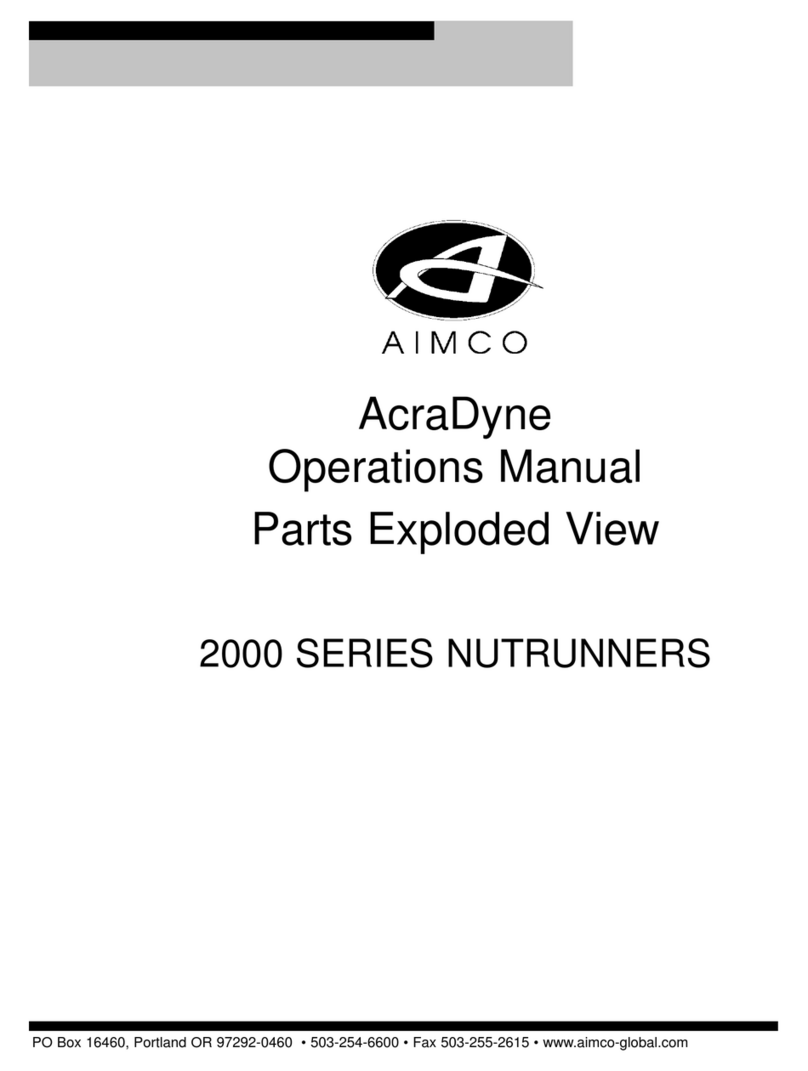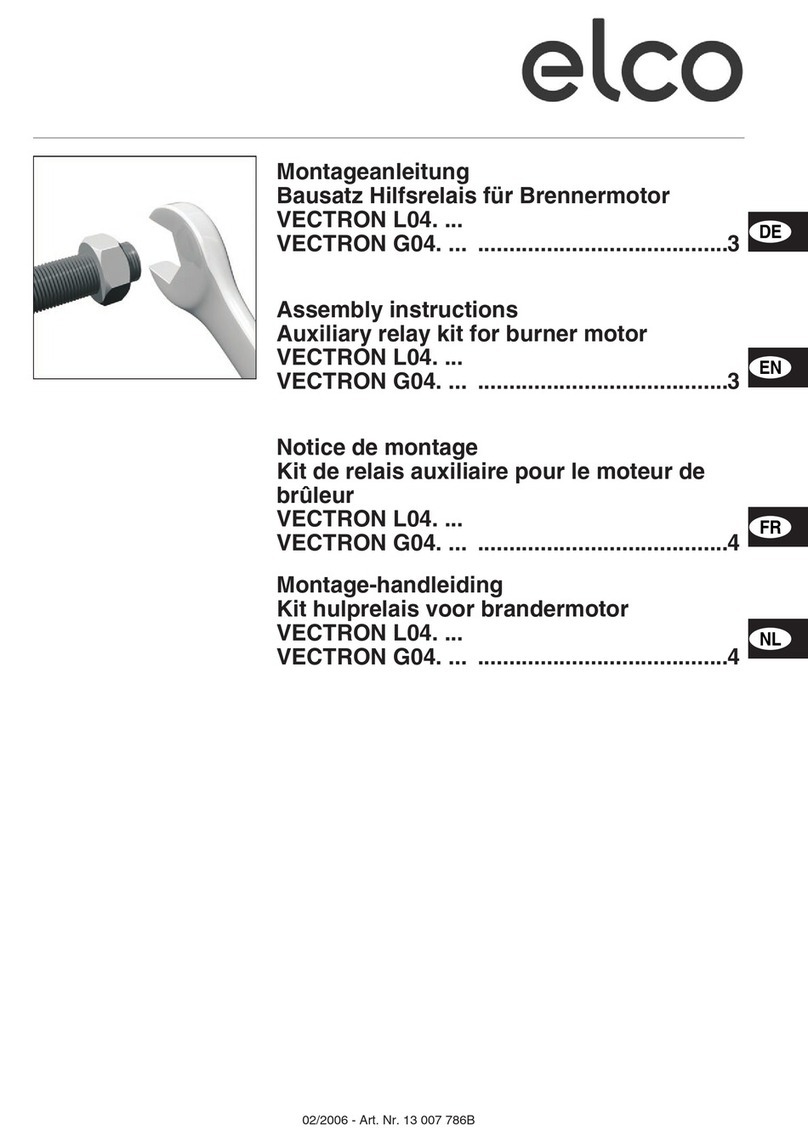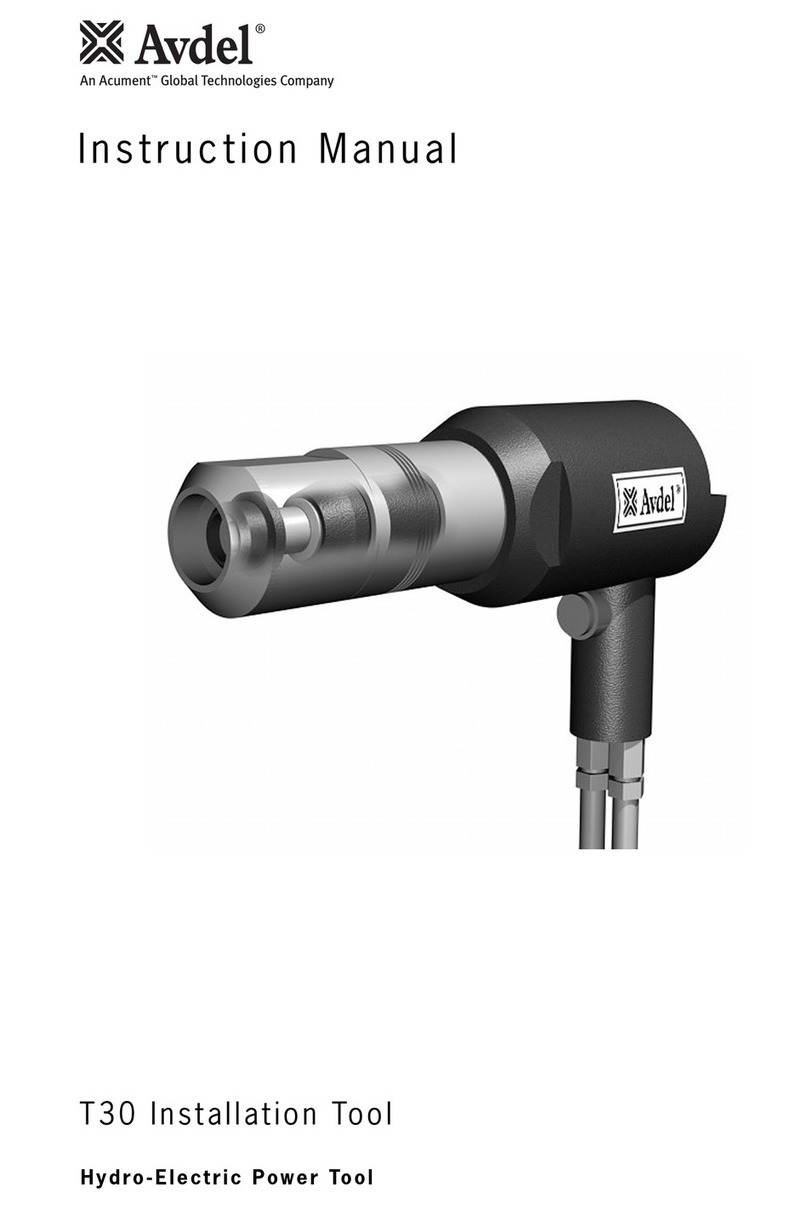BIG ANGLE HEAD User manual

Please be sure to read this manual before using the product.
ANGLE HEAD
UNIVERSAL TYPE AGU30
Consult the separate operation manual for Angle Head also regarding the
general handling of the Angle Heads.
OPERATION MANUAL

Thank you for purchasing the ANGLE HEAD.
Please read these instructions before use and keep them where
the operator may refer to them whenever necessary.
Caution
Regarding the safety
INSTALLATION & OPERATING INSTRUCTIONS FOR ANGLE HEAD
1
■SPECIFICATIONS
■OPERATION SEQUENCE
■OPERATION PROCEDURES
1. How to adjust the cutter angle
2. How to check the cutter direction
3. How to adjust the cutter direction
4. Installation of the cutting tool
■OTHER
1. Coolant feed to the cutting edge
P 2
P 3
P 4
P 8
P 9
P11
P12
ANGLE HEAD
The following indicator is used in the operation manual to signify points
relating to safe operation. Please ensure these points are fully understood
and followed correctly.
The Angle Head contributes to efficient machining by reducing setup times and
production processes, allowing automatic tool change and full adjustment of the cutter head
direction.
Should this equipment be incorrectly operated injury is possible
to the operator, or other personnel in the area. Equipment may
also be damaged.

SPECIFICATIONS
2
#40 Taper Shank
Maximum spindle speed (min-1)
Speed ratio (Body : Spindle)
Rotation direction
6,000
1 : 1
Forward
The fixed length A varies according to the machining
center model.
If the unit is used for more than 30 minutes at a speed
near the maximum spindle speed, it should be cooled by
supplying air or coolant via the Stop Block.
・
・
Maximum spindle speed (min-1)
Speed ratio (Body : Spindle)
Rotation direction
4,000
1 : 1
Forward
Pin compression : 5
Fixed Length A
Ø97(3.819)
Ø75(2.953)
(14)(0.554)
0
-
30
0
-
30
52.5(2.067)
65(2.559)
147(5.787)
30(1.181)
Ø35(1.378)
240(9.449)
105(4.134)135(6.024)
Ø2.5
-
13
(.098 to .512)
Ø2.5
-
20
(.098 to .787)
Locating Arm Orientation angle
Locating Pin
29(1.142) 29(1.142)
Fixed Length A
Pin compression : 3
Collar compression : 6
125(4.921)Ø
162(6.378)
110(4.331)
295(11.614)
165(6.496) 130(5.118)
(17)(0.686)
65(2.559)
39(1.535)
Ø46(1.811)
Ø98(3.858)
Locating Collar
Locating Arm
Locating Pin
36.5(1.437) 36.5(1.437)
Orientation angle
BBT, BIV, BDV, BCV40 SHANK
#50 Taper Shank BBT, BIV, BDV, BCV50 SHANK
Notes)
The fixed length A varies according to the machining
center model.
If the unit is used for more than 30 minutes at a speed
near the maximum spindle speed, it should be cooled by
supplying air or coolant via the Stop Block.
・
・
Notes)
(34)(1.328)
(45)(1.789)

OPERATION SEQUENCE
3
The scale of the cutter direction
Line marker
Thescaleofthe
cutterangle
Adjust the line marker to the cutter angle that you wish to set.
The angle without (example: 15 ) and the angle with _
(example: 15 ) indicate the same cutter angle.
Use the enclosed Setting Disk to precisely adjust the
cutter direction.
Adjusting the cutter angle changes the cutter direction also.
Read the same value of the scale of the cutter direction
with the value of the scale of the cutter angle you set, and
check that the values of the scales match each other.
In the case the cutter angle is adjusted without , check
that the scale of the cutter direction is also without . If the
cutter angle is adjusted with , check that the scale of the
cutter direction is also with .
How to adjust
the cutter angle
How to check
the cutter direction
How to adjust
the cutter direction
Installation of
the cutting tool
For details, consult
P4
-
P7
For details, consult
P9
-
P10
For details, consult
P8
For details, consult
P11
Angles with
Angles without

OPERATION PROCEDURES
4
Do not adjust the cutter angle while a cutting tool is mounted, as it is extremely dangerous to do so.
CAUTION
Use the short head of the included hex key
(consult the CAUTION below) and loosen the
(4) Clamping Bolts a little. Please be aware that
if the Clamping Bolts are released by too much,
this creates excessive clearance between the
Head Case and the Connection Case making
not possible to adjust the angle correctly.
(Fig.1)
Connection Case
Clamping Bolts
Head Case
Due to the interference with the Head Case, use
the short head of the included hex key to tighten
or release the Clamping Bolts.
CAUTION
Hold the Head Case by hand and rotate to the
selected angle. To set an angle, use the line
marker on the Connection Case and the scale
of the cutter angle on the Head Case. (Fig. 2)
(If it is not possible to swivel the Head Case to
the selected angle, it is necessary to remove
the Clamping Bolts. In this case, consult the
page 6 [If it is necessary to remove the
Clamping Bolts] ).
In the cutter angle’s scale, there are (2) types of
scale: with/without (examples: 15° and 15°).
Both scales indicate the same cutter angle.
(Fig. 3)
Short
The scale of the cutter angle
Line marker
1
2
(Fig. 1)
(Fig. 3)
How to adjust the cutter angle
1
30°
The scale of
the cutter angle
Swivel
Line marker
(Fig. 2)
Angles with
Angles without

CAUTION
CAUTION
5
The Head Case may become stuck when swiveling.
In this case, rotate the machine spindle manually and
slowly to rotate the Angle Head’s spindle by a little.
This will release the Head Case permitting it to rotate
smoothly.
Be aware that rotating the Angle Head forcefully may
damage the driving parts.
NEVER exceed the tightening torque by using
an extension.
Use the short head of the included hex key to tighten the (4) Clamping Bolts uniformly.
3
Rotate
Stuck

6
CAUTION
Please be aware that, removing the Clamping Bolt forcefully while the interference exists, may
damage the Head Case or the Clamping Bolt itself.
Please be aware of losing or dropping the Setting Plate
when the Clamping Bolts are removed and the Setting
Plate becomes free from the Head Case.
Use the short head of the included hex key to
remove the (4) Clamping Bolts. Due to the
interference with the Head Case there is (1)
Clamping Bolt which cannot be removed. Remove
this Clamping Bolt after having removed the
interference by swiveling the Head Case. (Fig. 4)
[If it is necessary to remove the Clamping Bolts]
The structure of the turning
Head Case is indicated in the
picture to the right. For every
45° swivel, it is necessary to
remove the Clamping Bolts
and to substitute the position
of the screw holes.
Structure’s view
Head Case
Connection
Case
Remove
SettingPlate
Avoidinterference
byswivelingthe
HeadCase
Even if the Clamping Bolts are removed, the
Head Case will not come off from the
Connection Case, but swarf or coolant may
invade the internal parts via the gap between
the cases. This can result in damage. When
removing the Clamping Bolts, hold the Head
Case in position so as not create clearance.
Invasion
Swarf
Coolant
(Fig. 4)
OPERATION PROCEDURES
1

CAUTION
7
[If it is necessary to set a very precise angle]
Changing the cutter angle will also change the cutter direction.
After adjusting the cutter angle, always check the cutter direction and adjust it if necessary.
Hold the Head Case by hand and swivel it to the selected angle. To set an angle, use the line
marker on the Connection Case and the cutter angle’s scale on the Head Case. (Page 4 Fig. 2)
Rotate the Setting Plate in order to match the screw
holes of the Connection Case and tighten the (4)
Clamping Bolts temporarily. Due to the interference
with the Head Case there is (1) Clamping Bolt which
cannot be inserted. Insert this Clamping Bolt having
removed the interference by rotating the Head Case.
(Fig. 5)
Install the included Setting Disk to the Angle
Head. (Consult the page 11 “Installation of the
cutting tool”.) By touching the reference face
of the Setting Disk with a test indicator and
using the machine feed (example: XZ axes) as
shown in the figure, it is possible, by reading
the test indicator’s values, to check the
deviation of the cutter angle. (Fig. 6)
Use the short head of the included hex key to tighten the (4) Clamping Bolts uniformly.
Avoidinterference
byswivelingthe
HeadCase
(Fig. 5)
(Fig. 6)
Insert
θ2
θ1
Cutter angle
Setting Disk
2
3
4
Z
X
(Example)

OPERATION PROCEDURES
8
If the cutter angle is adjusted without , check
that the scale of the cutter direction is also
without . If the cutter angle is adjusted with ,
check that the scale of the cutter direction is also
with .
Adjusting the cutter angle will also change the cutter direction. (Fig. 7)
(Fig. 8)
(Fig. 9)
Scale of the
cutter direction
Scale of the cutter angle
Position of the
line marker
Cutter direction
Scale of cutter direction
Read the same value of the scale of the cutter direction with the value of the scale of the cutter angle you
set, and check that the values of the scales match each other. (Fig. 8 Example of the cutter angle set to
15°
)
Using the position of the scale as the reference, adjust the cutter direction.
Scale of the cutter direction
How to check the cutter direction
2
1
2
(Fig. 7)
Cutterdirection
Cutterangle
0°
10
10°
20
20°
30
30°
To check the cutter direction, follow the procedures below.
Line
marker
Angles with
Angles without

9
Since the Body Case attached with the Locating Pin holds the Adapter Case connected with the Connection Case,
it is possible to set the cutter direction to any angle and to secure it easily with (2) Side Clamping Screws. (Fig. 10)
(Fig. 10)
(Fig. 11)
Install the Setting Disk enclosed in the Angle Head (Consult the page 11 “Installation of the cutting
tool”) and loosen the (2) Side Clamping Screws a little while the Angle Head is mounted in the
machine spindle. Please be aware that if the Side Clamping Screws are loosened too much, this
allows clearance between the Body Case and the Adapter Case. (Fig. 11)
Side Clamping Screws Adapter Case Head Case
Connection Case
Body Case
Body Case
Adapter Case
Side Clamping Screws
Setting Disk
No clearance
Side Clamping
Screws
How to adjust the cutter direction
3
1
To adjust the cutter direction, follow the procedures below.

OPERATION PROCEDURES
10
(Fig. 12)
(Fig. 13)
(Fig. 14)
Insert the Adjusting Rods in the side holes of the
Adapter Case, rotate the Adapter Case and
adjust the cutter direction. (Fig. 12)
It makes the adjustment easier to refer to the
value of the scale of the cutter direction that was
checked in the process [How to check the cutter
direction] on page 8.
(Fig. 13: Example of the cutter angle set to
15°
)
[Example of the cutter angle set to 15°]
Following the example of “How to check the cutter direction” on page 8, the cutter is pointing toward
the 15° position of the scale of the cutter direction. Use this value as a reference point and turn the
Adapter Case to the selected direction. (Example here: parallel to the X axis)
By touching on to the reference face of the Setting Disk with a test indicator and moving in both right and left
directions, it is possible to check the parallelism of the cutter direction with the target direction. Inserting the
(2) Adjusting Rods in the Adapter Case at opposite positions will ease the fine adjustment. (Fig. 14)
Adjusting Rods
Cutterdirection
Swivel
Rotate
Fine adjustment
Beforeadjustment Afteradjustment
2
3
Reference face
Swivel
Y
X

11
CAUTION
CAUTION
NEVER exceed the tightening torque by using an
extension which may distort the Adapter Case.
Changing the cutter angle will also change the cutter direction. Please pay enough attention when
performing the adjustment process.
Tighten the (2) Side Clamping Screws uniformly with the hex key.
NEVER exceed the tightening torque by
using an extension.
Be sure to hold both the Spindle and Nut
with the wrenches. Neglecting to do so will
result in internal damage.
NEVER clamp the flute portion of the cutting
tool.
Clean the inner diameter of the chuck and the cutting tool shank in order to completely remove traces of
oil and particles. Insert the cutting tool and attach the accessory wrenches to the Spindle and the Nut
and tighten.
NB Never fail to hold the Spindle.
Installation of the cutting tool
4
4

OTHER
12
CAUTION
If the Angle Head is stored for an extended period after using a water-soluble coolant, it may be subject
to rust. Blow air through the Locating Pin to remove the remaining coolant and pour anticorrosion oil
from the Locating Pin prior to storage. Before using the unit again, depress the Locating Pin by hand to
check if it moves smoothly.
The Angle Head adopts non-contact seals. However,
assure to adjust the nozzles of the machine so that the
coolant directs not onto the unit but at the cutting tool.
Neglecting to do so may cause penetration of coolant
and internal damage.
CAUTION
If the unit is used for more than 30 minutes at a speed near the maximum spindle speed, please
cool by supplying air or coolant via the Stop Block.
Coolant feed to the cutting edge is achieved via a Stop Block which is connected to a coolant supply
pipe. Coolant flow through the Body Case contributes to the cooling of the unit.
[ The maximum coolant pressure is 1MPa (142PSI). ]
Coolant feed to the cutting edge
1

NO.0909
EXPORT DEPARTMENT
INTERNATIONAL TECHNICAL COMMUNICATION CENTER
This manual suits for next models
1
Table of contents
Popular Tools manuals by other brands
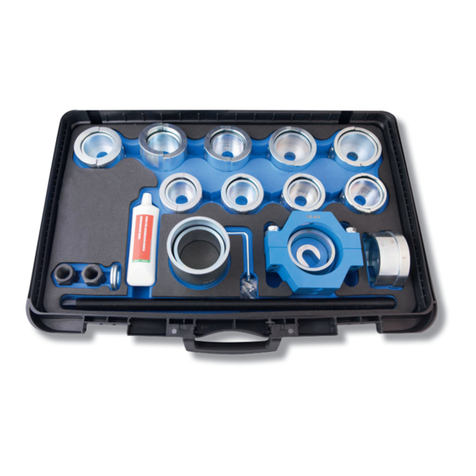
CLAS
CLAS OM 9381 manual

Cessna
Cessna 510 Mustang Structural Repair Manual
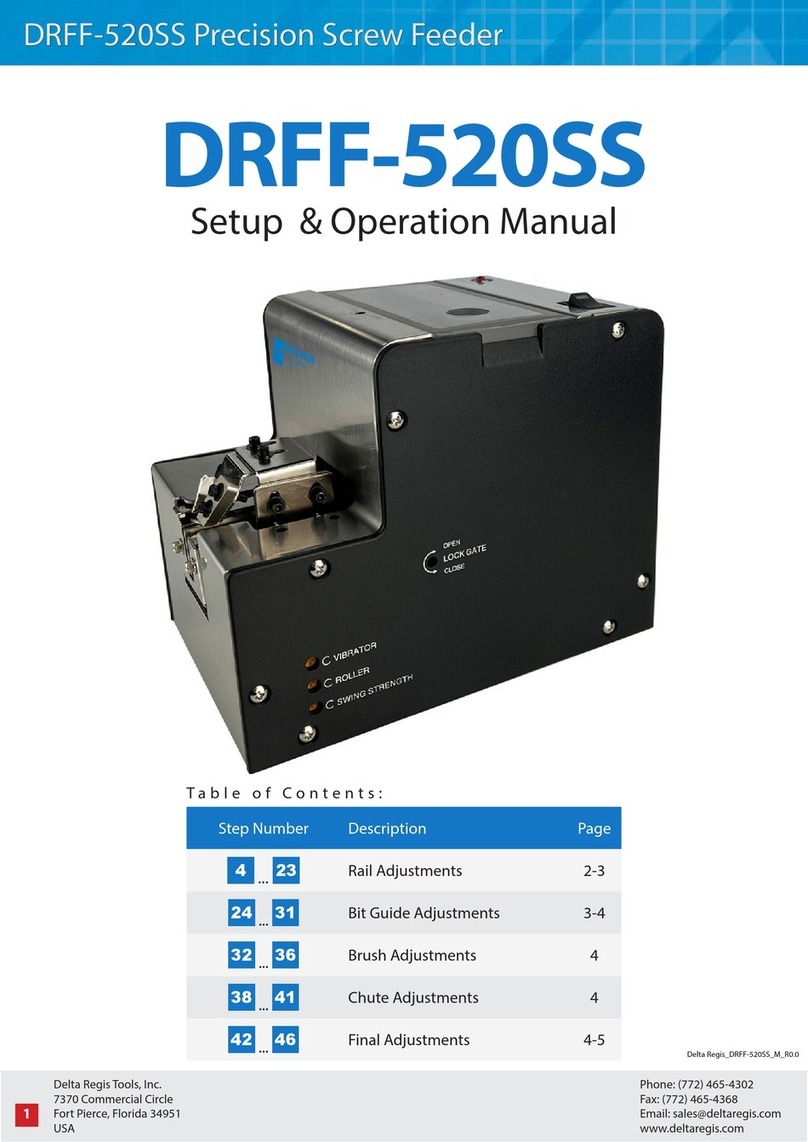
Delta Regis
Delta Regis DRFF-520SS Setup & operation manual
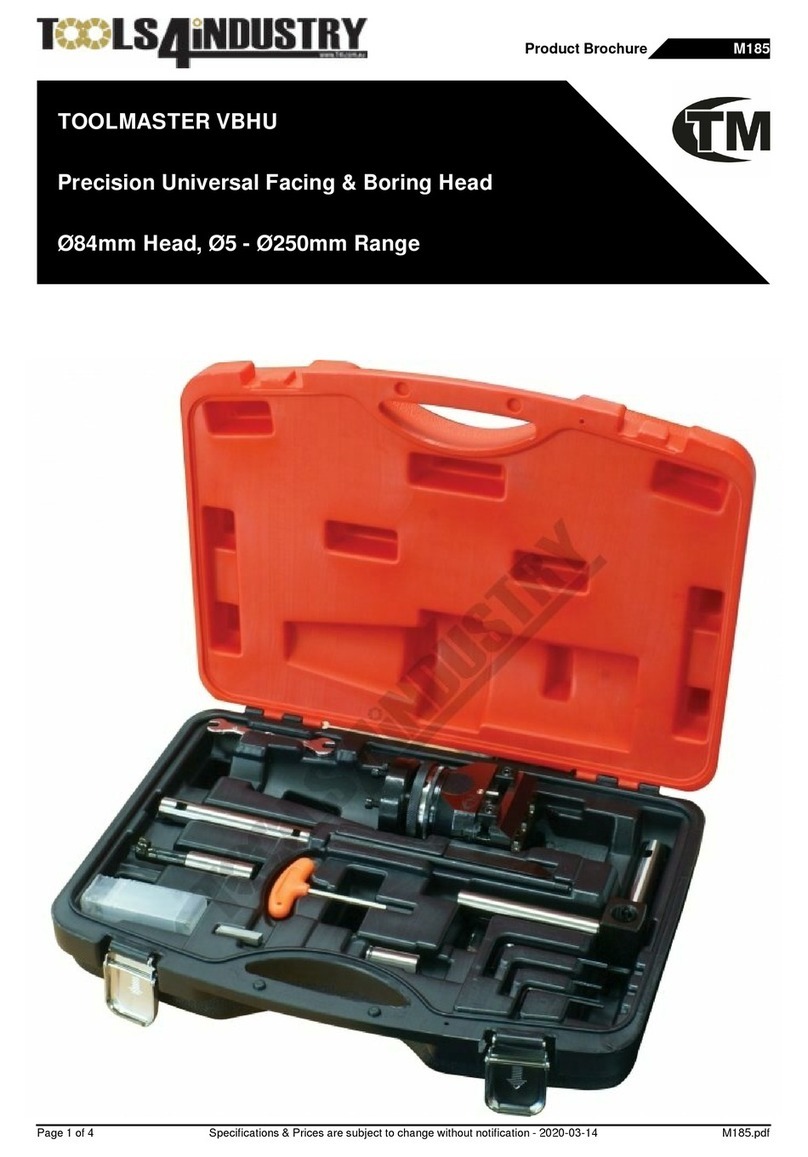
Tools 4 Industry
Tools 4 Industry TOOLMASTER VBHU Product brochure
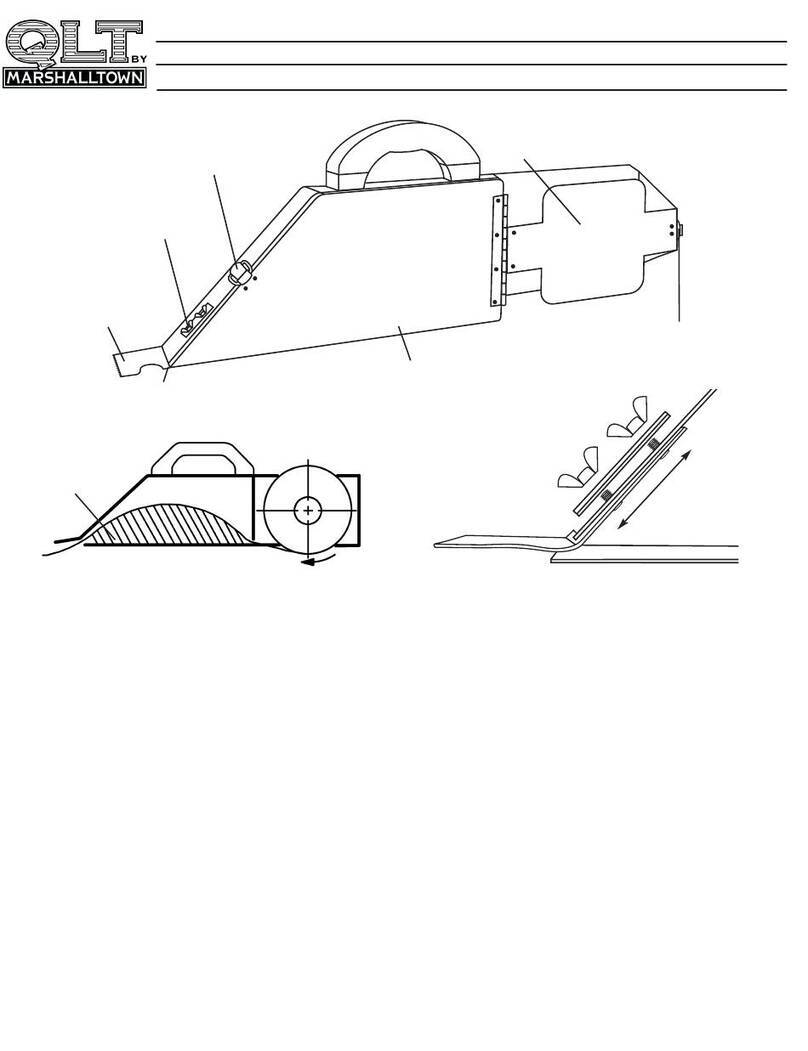
Marshalltown
Marshalltown QLT LOADING AND OPERATING INSTRUCTIONS
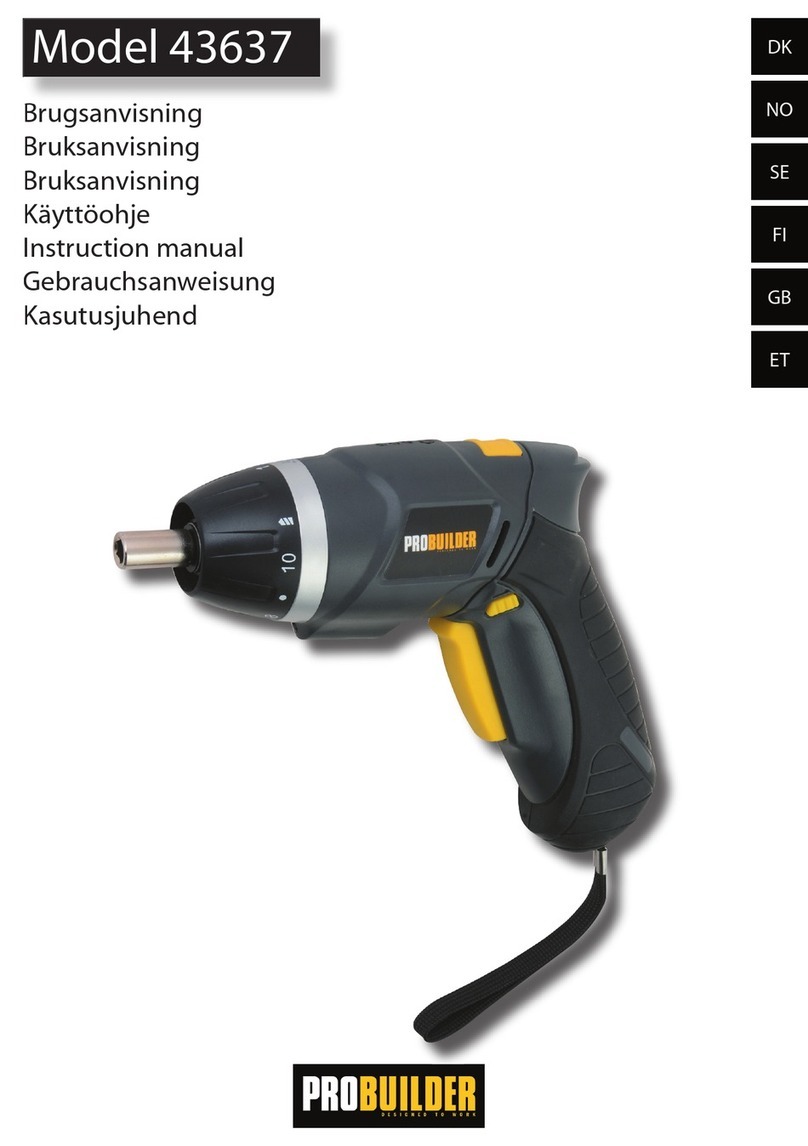
Probuilder
Probuilder 43637 instruction manual
